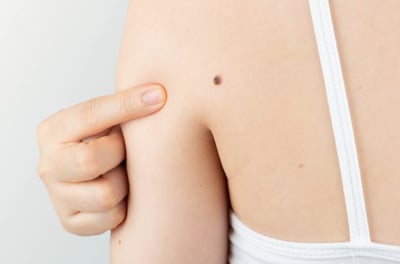
When you think of skin cancer, your first thought probably is somewhere on the face or arms. But did you know that skin cancer can be and has been found in areas that may or may not ever see sunlight?
Here are a few surprising and rare places skin cancer has been found:
- The Scalp – Scalp melanomas are some of the deadliest melanomas given they are typically hidden by the hair and not spotted until the cancer is in advanced stages.
- The Eyelids – While skin cancer developing on the eyelids is rare, it can happen. Your eyelids are highly exposed to the sun and a place where many forget to apply sunscreen.
- The Eyes – Melanoma of the eye is rare but the most common type of intraocular cancer found in adults. A dermatologist may be able to spot a melanoma of the iris, but if the melanoma is around the choroid or ciliary body of the eye, your ophthalmologist usually diagnoses it.
- Under the Nails – When melanoma develops under the nails it is called subungual melanoma. This form of melanoma can occur on either your fingers or toenails. They often appear as brown or black vertical lines under the nail that spreads slowly over time. It is often missed early because people assume it is a bruise or fungal infection.
- Bottom of the Feet – Even though the bottom of the foot does not receive much sun exposure, skin cancer may still develop there. It is also one of the last places people look when checking their skin for changes.
Other rare places skin cancer has been found include the armpits, palms, genitals, behind the ears, on the back of the knees, and on your buttocks. It’s important to remember that just because an area of your skin doesn’t see the sun very often doesn’t mean that skin cancer can’t develop there.
This is also your friendly reminder that if you ever spend time in a tanning bed, you are at a greater risk of developing skin cancers in these rare locations. Head-to-toe and front-to-back, your entire body is exposed to UV radiation when using a tanning bed.
If you have a suspicious mole or haven’t received your annual skin cancer screening, find a location near you to schedule an appointment with your local board-certified dermatologist.





